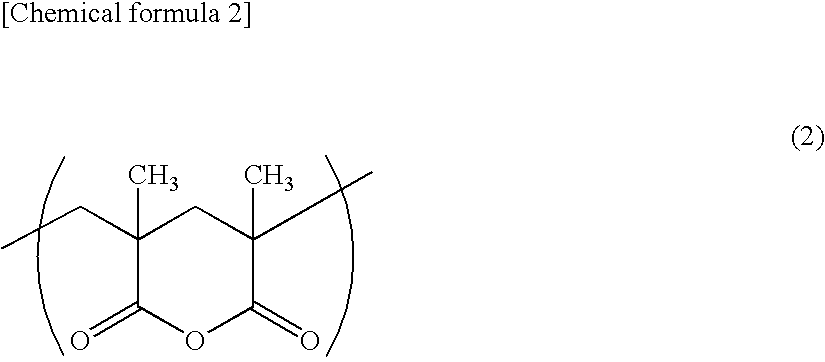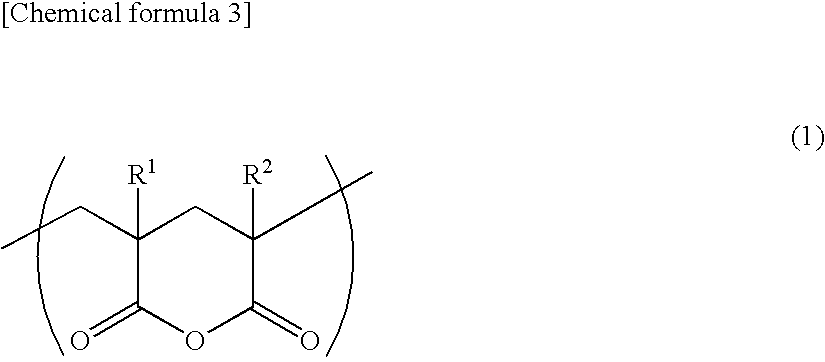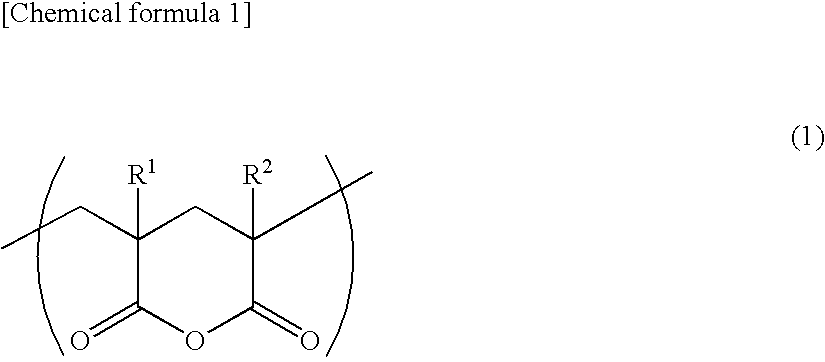Acrylic Resin Films and Process for Producing the Same
a technology of acrylic resin and resin film, applied in the field of acrylic resin film, can solve the problems of film liable to be deformed, liable to be cracked during processing,
- Summary
- Abstract
- Description
- Claims
- Application Information
AI Technical Summary
Benefits of technology
Problems solved by technology
Method used
Image
Examples
working example 1
[0160] Seventy five parts by mass of the acrylic resin (A1) obtained in Reference Example (1) and 25 parts by mass the acrylic elastic particles (B1) obtained in Reference Example (3) were mixed, and the mixture was kneaded using a two-screw extruder (TEX 30 produced by the Japan Steel Works, Ltd., L / D=44.5) at a screw speed of 150 rpm at a cylinder temperature of 280° C., to obtain an acrylic resin formed as pellets.
[0161] Then, the pellets dried at 100° C. for 3 hours were extruded through a T die (set at a temperature of 250° C.) using a vented single-screw extruder of 65 mm+, and both the surfaces of the extruded film were brought into perfect contact with polishing rolls, for being cooled, to obtain a cast acrylic resin film. The acrylic resin film was stretched to 1.5 times in the longitudinal direction and to 1.5 times in the transverse direction at a preheating temperature of 130° C. and at a stretching temperature of 145° C. using a linear motor-driven simultaneous biaxial...
working examples 2 to 5
[0163] Acrylic resins formed as pellets were obtained by using the acrylic resin (A2) obtained in Reference Example 2 as the acrylic resin and using the acrylic elastic particles shown in Table 1 by the amounts shown in Table 1, and using a double-screw extruder (TEX30 produced by the Japan Steel Works, Ltd., L / D=44.5) at a screw speed of 150 rpm at a cylinder temperature of 280° C. The pellets were dried by a vacuum dryer at 80° C. for 8 hours, to eliminate water.
[0164] Fifty grams of the obtained acrylic resin and 150 g of 2-butanone were placed in a 300 ml separable flask equipped with a stirrer, and were stirred by double helical ribbon stirring blades for 24 hours. The obtained solution was filtered using a 1 μm-removing glass filter, to obtain an acrylic resin solution.
[0165] The acrylic resin solution was partially taken on a glass sheet having a 100 μm thick polyethylene terephthalate film fixed on it, and a bar coater was used to form a uniform film. It was heated at 50° ...
PUM
| Property | Measurement | Unit |
|---|---|---|
| Temperature | aaaaa | aaaaa |
| Fraction | aaaaa | aaaaa |
| Fraction | aaaaa | aaaaa |
Abstract
Description
Claims
Application Information
 Login to View More
Login to View More - R&D
- Intellectual Property
- Life Sciences
- Materials
- Tech Scout
- Unparalleled Data Quality
- Higher Quality Content
- 60% Fewer Hallucinations
Browse by: Latest US Patents, China's latest patents, Technical Efficacy Thesaurus, Application Domain, Technology Topic, Popular Technical Reports.
© 2025 PatSnap. All rights reserved.Legal|Privacy policy|Modern Slavery Act Transparency Statement|Sitemap|About US| Contact US: help@patsnap.com



